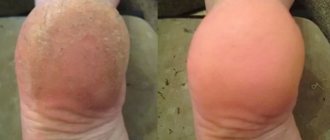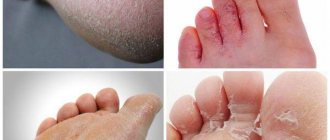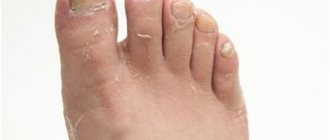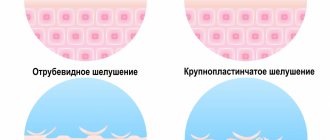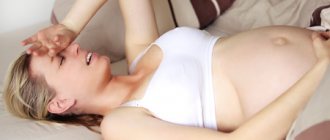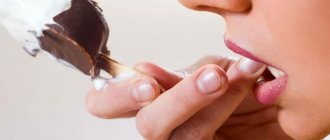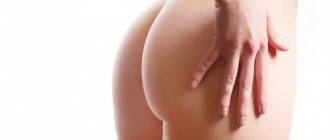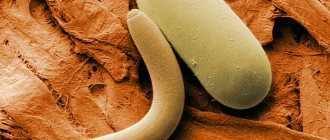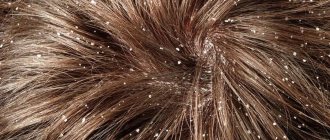Dermatovenereologist (cosmetologist)
Baichorova
Marua Azretovna
20 years of experience
Dermatologist (cosmetologist)
Make an appointment
Sweating is a natural mechanism formed during the process of evolution. Its primary function is body thermoregulation. Almost all mammals have sweat glands. When the body heats up, they are activated and release a specific liquid that cools the body during evaporation. Sweating is also involved in the process of removing excess water, metabolic products, salts and other substances through the skin. That is, this is a natural process, but for some people it proceeds too rapidly, even for no apparent reason. The phenomenon is called hyperhidrosis.
Normal sweating
Hyperhidrosis is not a disease, but rather an individual characteristic of the body, which causes a lot of trouble in everyday life. Normally, increased sweating is a common reaction to the following factors:
- temperature increase;
- physical exercise;
- stress;
- hot and spicy food;
- hormonal changes associated with menopause, pregnancy, puberty.
In addition, it can be a side effect when taking certain medications.
With little physical activity, a person produces about 0.5 liters of sweat per day, but as temperature and load increase, this volume can increase to 10 liters. Sweat glands respond to signals sent by the brain in two ways:
- increase or decrease the amount of sweat;
- open for active release of moisture, or close.
Diagnosis of foot hyperhidrosis
To determine the cause of foot hyperhidrosis, it is necessary to undergo a comprehensive examination using instrumental and laboratory techniques. This disease is treated by dermatologists. After special tests, the presence of pathology can be determined, as well as the severity of the disease and its cause.
The main diagnostic methods include:
- Minor's sample. Here starch is used, which is applied to the skin after lubricating it with iodine. Normally there should be no staining, but with hyperhidrosis an intense purple tint is noted. A clear color boundary allows for differential diagnosis of a local disease with other ailments in which excessive sweating is observed.
- Gravimetric test. This method determines the amount of sweat that comes out of the skin in one unit of time. Here, filter paper is used, which is weighed before and after application to the skin on the feet. In this way, the severity of the pathology can be determined.
- If a patient suspects a foot deformity, a consultation with an orthopedist and photoplantography using computer equipment will be a prerequisite. In cases where the probable cause of excessive sweating is problems of the central nervous system, a consultation with a neurologist is prescribed. Psycho-emotional disorders require attention from a psychotherapist. If diseases that can cause excessive sweating of the feet are excluded, a diagnosis of “essential hyperhidrosis” will most likely be made.
Types of hyperhidrosis
There are primary and secondary hyperhidrosis. The first is a permanent property of a person; it begins to manifest itself in childhood or adolescence, while the work of the sweat glands deviates from the norm. They may open too quickly or not close at all, causing increased sweating even in a cool room. The reason for this phenomenon still remains unclear.
The second develops in certain diseases. Among them:
- vegetative-vascular dystonia;
- tuberculosis;
- neurasthenia:
- syphilis;
- rheumatism;
- pathologies of the nervous system;
- diabetes;
- a sharp decrease in blood glucose levels;
- oncology;
- hyperthyroidism.
Statistics say that about 5% of people in the world suffer from primary hyperhidrosis, which is equally common in men and women, and secondary – about 15%. It manifests itself locally, only in certain places where the largest number of sweat glands accumulate (under the arms, on the feet, head, face, palms, groin), or generalized. And although this condition does not pose a threat to health, excessive hydration can have unpleasant consequences:
- local swelling, redness and inflammation;
- body hypothermia;
- psychoemotional disorders.
Are you experiencing symptoms of hyperhidrosis?
Only a doctor can accurately diagnose the disease. Don't delay your consultation - call
What examination is needed?
If you have excessive sweating, you need a dermatologist, and if you have hyperhidrosis of the feet, you need a podiatrist. To find out the type and causes of hyperhidrosis, the doctor will definitely conduct an examination before treatment. If necessary, he will refer you to a neurologist or other specialized specialists.
Answering the following questions will help you determine the type of hyperhidrosis:
- Does sweating happen for no apparent reason?
- Is it the same on both sides of the body?
- How does it affect quality of life?
- How often do episodes of excessive sweating occur?
- When did the first symptoms appear?
- Do relatives have this problem?
- Do you sweat during night sleep?
Special functional tests have been developed to assess the degree of hyperhidrosis. They are used to determine the amount of sweat secreted, the intensity of sweating, and find the places on the body where it is most pronounced. Most tests have no practical diagnostic value. They are used for scientific research or to evaluate the effectiveness of treatment.
These methods include:
- calculation of body weight loss over a certain time;
- absorption of sweat from the skin or in special chambers by various absorbers;
- measurement of skin surface resistance, which changes depending on the intensity of sweating;
- provocative tests with the introduction of substances that stimulate or inhibit sweating;
- tests using substances that can change color when combined with sweat (iodine-starch test).
In case of secondary hyperhidrosis, the doctor will ask you in detail about your health status. He will prescribe blood and urine tests, hormonal tests, and measure blood pressure to find the true cause. If you have a chronic illness or are taking any medications, tell your doctor.
Which doctor should I contact? Diagnostics
If you have hyperhidrosis, you should first consult a therapist, who can refer the person for further consultation to the following specialists:
- a dermatologist if there are signs of dermatosis and inflammation of the sweat glands;
- to a neurologist if autonomic disorders are suspected;
- an endocrinologist to rule out diabetes mellitus and thyroid dysfunction;
- cardiologist, for angina pectoris;
- an orthopedist, since sweating of the feet often accompanies flat feet;
- a psychotherapist if the problem is psychological in nature.
In order to determine the degree of hyperhidrosis and areas of increased sweating, the Minor test is used. Take a 2% iodine solution, apply it to the skin area under study, dry it and sprinkle with starch. If sweating exceeds the norm, the skin turns purple and sometimes black. These areas are then marked for subsequent treatment.
Possible causes of palm hyperhidrosis
Only a doctor can find the cause, based on the medical history and, if necessary, test results.
- Possible causes of sweaty hands:
- Stressful state of a person. Nervous tension causes disruption of heat exchange processes, and palms may become damp. This condition usually goes away when the person becomes calm.
- Endocrine diseases. The thyroid gland is involved in thermoregulation of the body. Consultation with a specialist and treatment according to his recommendations are necessary.
- Disruptions in the hormonal system. An examination by a doctor will help you understand the problem.
- Side effects from the use of certain medications, unbalanced diet.
- A natural feature of the body is a fairly common cause of sweaty palms. It does not require mandatory treatment, but successfully resolving the issue of sweating palms will help you forget about a lot of inconvenience. Often sweating of the palms in this case is combined with hyperhidrosis of the feet.
If we are talking about hyperhidrosis of the whole body, be sure to visit a doctor to rule out any diseases.
How to treat hyperhidrosis
If secondary hyperhidrosis is diagnosed, the underlying disease should be treated to eliminate it. In the case of primary, general tonic agents are often prescribed; it is also recommended to use disinfecting and skin-drying powders and strong antiperspirants. Sometimes treatment with a psychotherapist is also required. If the above methods do not produce results, more serious therapy is recommended.
Iontophoresis
This method has proven itself well for hyperhidrosis of the palms and feet. To do this, the hands and feet are immersed in warm water, through which a weak electrical discharge is passed. There are no painful sensations. To noticeably reduce sweating, two to four procedures of half an hour are enough.
Botox or Dysport
These drugs containing botulinum toxin are widely used in cosmetology to remove wrinkles on the face, due to their ability to block neuromuscular transmission. They have also proven effective in treating hyperhidrosis. They are injected into areas of increased sweating to block the nerve endings that activate the sweat glands. Usually several injections are required, but they last for a certain period (about six months), after which the course will have to be repeated.
Anticholinergic drugs
These drugs are widely used in the treatment of Parkinson's disease and spastic paralysis. It turned out that they also help with hyperhidrosis by blocking nerve impulses sent to the sweat glands. A positive effect occurs two weeks after starting to take medications, but they should be taken with caution in case of hypertension, atherosclerosis, problems with the heart, liver and kidneys.
Endoscopic sympathectomy
When previous methods do not produce results, you can decide on surgery - endoscopic sympathectomy, in which the surgeon removes the nerves that conduct electrical signals to the sweat glands. This method can only be used for hyperhidrosis of the palms, armpits and face, and it also has many contraindications.
Hyperhidrosis - symptoms and treatment
Treatment of primary hyperhidrosis is carried out quite often and effectively, but due to the complexity of the initial diagnosis, patients often visit many different specialists in search of an adequate method of treating the disease.[22]
In general, it is more correct to talk about the need for a multidisciplinary approach to treatment with the involvement of a general practitioner, endocrinologist, dermatologist, neurologist, psychotherapist and surgeon.[12] The doctor’s experience, knowledge of the problem of hyperhidrosis and the possibilities of eliminating it are of primary importance.
How to treat hyperhidrosis
The following approaches can be distinguished in the treatment of hyperhidrosis:
- drug therapy;
- local effect on the source of increased sweating;
- surgical treatment.
Drug therapy
In the treatment of hyperhidrosis, systemic medications are used. It is possible to significantly reduce sweating with the use of oral anticholinergic drugs. In most cases, such systemic treatment is effective, but, unfortunately, due to the frequent development of side effects, long-term use of these drugs is rarely possible.
Among the drugs approved for use in the Russian Federation, oxybutynin . Its daily use in small doses (less than 10 mg per day) can reduce sweating with minimal development of side effects of the drug. You should start with 2.5 mg, gradually increasing the dosage to 10 mg.[1][4][28]
There are also numerous publications on the use of a drug such as glycopyrrolate (only the inhalation form of this drug is registered in the Russian Federation). According to the literature, this remedy is quite effective, although its use is accompanied by side effects.[11]
Among other things, some doctors recommend broad-spectrum drugs - benzodiazepines, amitriptyline, gabapentin, clonidine, verapamil, beta blockers. Their use makes sense if they are prescribed for an underlying condition. These drugs, as a rule, are not used exclusively for the treatment of sweating.
Local treatment
Local impact on an area of skin with increased sweating provides blockade of the problem area. There are several methods of such treatment.
Antiperspirants based on aluminum salts
This is the most common method of combating excessive sweating.[14]
The bulk of commercially available antiperspirants are absolutely useless for severe hyperhidrosis. In this case, only medical grade antiperspirants can help.
The effectiveness of an antiperspirant is determined by the concentration of aluminum salts (usually aluminum chlorides). At the initial stage, you can use a spray with a 10-12% concentration, but antiperspirants with a 15% concentration, as well as with 20%, 25% and 30% are most often used. Higher concentrations are very rarely used due to significant irritant effects on the skin.
The mechanism of action of antiperspirants: penetration of the active substance into the pores with the subsequent formation of metalloprotein plugs that prevent the release of sweat. The penetration process of the drug takes at least one hour after application, therefore the antiperspirant should be applied only at night before bed and only on dry skin. In the morning, the drug must be washed off.
IMPORTANT : The widespread advertising about applying antiperspirants in the morning after a shower is extremely incorrect. In this case, the sweat glands, active in the morning, will be further stimulated, and the sweat released will wash away the applied antiperspirant. Moreover, applying antiperspirant to a damp surface causes skin irritation similar to a chemical burn.
The effectiveness of treatment with antiperspirants is especially high for axillary hyperhidrosis. At the same time, you need to know that in the case of long-term treatment (3-4 years), atrophy of the sweat glands may develop, and, accordingly, a cure for hyperhidrosis. For mild forms of palmar and foot hyperhidrosis, this treatment can also be effective.
The popular literature often discusses the connection between the use of antiperspirants and the development of breast cancer, but there is no scientific basis for such a statement.
Iontophoresis (iontophoresis)
This physiotherapeutic method of treating primary hyperhidrosis is especially effective in cases of mild to moderate palmar and foot forms of the disease.[5][10]
Treatment is carried out in baths with plain water and aluminum electrodes placed at the bottom, through which a direct or pulsed electric current is passed.[14][16]
As a rule, procedures are carried out separately for arms and legs. They last 20-30 minutes. In total, 10-12 procedures are necessary to obtain the effect (preferably daily).
Once anhidrosis is achieved, the effect may last 2-3 weeks or longer, after which treatment is repeated. Another option to maintain the effect is preventive treatment every 4-5 days.
IMPORTANT : the method cannot be used if you have metal implants or cancer.
Botulinum toxin injections
This local method of getting rid of hyperhidrosis is effective for any localization of increased sweating (most often axillary).[10][14] Treatment consists of intradermal injections of the drug into areas of hyperhidrosis.
The action of the method is based on the absorption of the injected drug by the nerve endings, a fragment of which leads to blocking the release of acetylcholine.
Due to the speed, safety and high efficiency of the procedure, this method is now considered as the gold standard for the treatment of axillary hyperhidrosis. The duration of the effect is 6-8 months, after which repeated treatment is required.
Botulinum toxin injections are also effective for palmar hyperhidrosis, although they are used much less frequently due to the need to use higher doses. When treating this form, short-term weakening of the muscles of the thumb is possible (for 2-3 weeks), and therefore initial treatment is best carried out on one hand.
The method is less likely to be effective on feet with severe sweating, despite the use of high doses of the drug.
New methods of local treatment
New local treatments include microwave thermolysis of sweat glands,[25] radiofrequency microneedle therapy,[18] microfocus ultrasound and local hyperthermia.[15][22] All of them are applicable only for axillary forms of hyperhidrosis.
Local surgery
Local surgical treatment for hyperhidrosis in the armpits includes complete excision of the hyperhidrosis area, subcutaneous shaving, laser and suction curettage of areas of increased sweating.[2]
Excision is the most radical method. It is usually used when there is excess skin fold in the armpit area. It is highly effective, but is accompanied by a rather rough scarring process.
A lighter version is shaving - partial excision followed by visually controlled removal of the dermis layer.
Subcutaneous aspiration curettage can be considered a minimally invasive method. The operation is performed under local anesthesia. Instruments are inserted through a mini-incision to separate the axillary flap, followed by aspiration and curettage of the dermis until the skin flap is thinned. The method rarely leads to complete anhidrosis, but it significantly reduces the intensity of sweating.[29]
Treatment of hyperhidrosis with laser
Laser treatment for hyperhidrosis is used to eliminate axillary hyperhidrosis and is performed under local anesthesia. Exposure leads to damage to the sweat glands and a decrease in the severity or elimination of hyperhidrosis.
Contraindications for laser treatment of hyperhidrosis. The method has no side effects. Contraindications for laser treatment are intolerance to anesthesia and local inflammatory or scar processes. An acute inflammatory process is an absolute contraindication, scar changes are a relative contraindication, i.e. the procedure can be performed, but with certain technical difficulties or not always fully.
Surgical treatment
This approach to the treatment of hyperhidrosis involves surgical intervention on the sympathetic nerves - sympathectomy. There are two methods of endoscopic sympathectomy - thoracic (thoracic) and lumbar.
Endoscopic thoracic sympathectomy (ETS)[19][22]
ETS is the only permanent treatment for palmar and facial hyperhidrosis. The operation is one-step, performed in one of the following ways:
- removal of ganglia (sympathectomy);[17]
- intersection of the sympathetic trunk between the ganglia (sympathicotomy);[19]
- intersection of sympathetic communicating branches (ramycotomy);
- clipping of the sympathetic trunk is the only reversible method of influencing the sympathetic trunk.
The operation is performed with the patient in the supine position with arms apart under endotracheal anesthesia (it is also possible to perform the operation with a laryngeal mask):
- A telescope and instruments are inserted into the pleural cavity through incisions in the armpits;
- at the required level, the sympathetic trunk is isolated and processed;
- after the lung is expanded, the ports are removed and the operation continues on the other side (no drains are left).
The intervention may be hampered by previous chest surgery or severe pneumonia with pleurisy.
The duration of the operation in experienced hands does not exceed 15-20 minutes. Typically, the patient can be discharged from the hospital within a few hours. The effect of the operation is immediate: the palms become dry (as a rule, forever) and warm (lasts three months). After the operation, there may be a short-term resumption of sweating within a week, which quickly passes. When using 5 mm instruments, minor pain may occur, which also lasts no longer than a week.
Relapses of hyperhidrosis are possible in approximately 10% of cases. They are associated with activation of the overlying sympathetic ganglia, which were not affected.
Complications are unlikely (mostly occur when treated by inexperienced doctors):
- erroneous impact on similar structures (accessory nerves);
- damage to the stellate ganglion with the development of Horner's syndrome;
- injury to the intercostal nerve or branches of the brachial plexus.
IMPORTANT : Sympathectomy is not recognized by all doctors due to the potential risk of developing compensatory hyperhidrosis. In most cases, such hyperhidrosis still occurs both immediately after surgery and several months later. It manifests itself in the form of inadequate sweating of the torso below the zone of influence on the sympathetic trunk: the back, chest, abdomen are usually affected, and less often the buttocks, thighs and popliteal areas. However, compensatory hyperhidrosis is easily tolerated and, as a rule, occurs only in the hot season, during physical activity and less often during excitement.[7]
Because of this possible condition, the patient should be thoroughly informed about the risk of side effects from the operation.
Approximately 4-5% of patients consider compensatory hyperhidrosis as a more serious problem than the original sweaty palms, and therefore strive to return everything to the way it was. The latter is only possible with clipping, when during a repeat operation the clips are removed, and within 6-12 months it is possible to restore the original state. The likelihood of reversion is higher with early treatment after the first operation.
A more complex option for returning to the original state is the formation of a nerve insertion from the sural or intercostal nerve. The most promising is considered to be reconstruction of the trunk using a surgical robot.
Endoscopic lumbar sympathectomy (ELS)[21][22]
EPS is the only permanent treatment for foot hyperhidrosis. It is less common due to its technical complexity, and also due to the fact that treatment is resorted to only in extreme cases, when the level of hyperhidrosis can be described as catastrophic - constantly wet feet to the point of visible streams of sweat.
The operation is performed under general anesthesia sequentially on both sides:
- a retroperitoneal cavity is created using an expander balloon;
- a video camera and two manipulators are introduced sequentially;
- the sympathetic trunk stands out and overlaps at the level of 3-5 lumbar vertebrae;
- the operation is repeated on the other side.
The effect of the operation is immediate.
Potential complications:
- risk of damage to the genitofemoral nerve, which leads to a feeling of numbness in the inner thigh;
- development of lymphocele - accumulation of lymph in tissues (rare).
Specific complications include postsympathectomy neuropathy. This condition develops 7-10 days after surgery and occurs in the form of pain of varying intensity in the lower abdomen, thighs and legs. This complication is observed in approximately 30% of those operated on, and most often it goes away on its own. Isolated cases of long-term persistent course of neuropathy have been described, which should be reported to patients in advance.
Information about the undesirable effects of surgery on the male genital area has not been confirmed.
As with thoracic sympathectomy, lumbar resection of the sympathetic nerve may be accompanied by increased general body sweating, but to a significantly lesser extent than after thoracic sympathectomy.
Choice of treatment method
The choice of treatment method depends on the location of the hyperhidrosis zone, its severity and the likelihood of developing side effects.
Axillary hyperhidrosis:
- antiperspirants - start with 15%, if ineffective, increase the concentration;
- botulinum toxin injections;
- local methods of physiotherapy and any of the new treatment methods;
- local surgical methods;
- sympathectomy - exclusively for a combination of palmar and axillary hyperhidrosis.
Palmar hyperhidrosis:
- antiperspirants - immediately start with 25-30%, the effect can be expected only with mild forms of hyperhidrosis;
- iontophoresis - for mild and moderate hyperhidrosis;
- botulinum toxin injections - help with any severity of hyperhidrosis, however, with a severe degree, increased doses are required, and the duration of the effect may be insignificant;
- endoscopic thoracic sympathectomy - helps with any degree of hyperhidrosis, but is most justified in severe cases.
Foot hyperhidrosis:[26]
- absorbent insoles and frequent changes of shoes - for mild forms of hyperhidrosis;
- antiperspirants - immediately start with 25-30%, the effect can be expected only with mild forms of hyperhidrosis;
- iontophoresis - mainly for mild and moderate hyperhidrosis;
- botulinum toxin injections - help with any severity of hyperhidrosis, however, with a severe degree, increased doses are required, and the duration of the effect may be insignificant;
- endoscopic lumbar sympathectomy - helps with any degree of hyperhidrosis, but is most justified in severe cases.[21]
Hyperhidrosis of the face and scalp:[23]
- therapy with systemic drugs - especially when sweating of the scalp predominates and hyperhidrosis occurs in adulthood;
- antiperspirants - no more than 10-12% due to the risk of skin irritation;
- botulinum toxin injections - only in the forehead and carefully in the perioral area due to the risk of blocking facial muscles;
- endoscopic thoracic sympathectomy - helps with any degree of hyperhidrosis, but is most justified with severe degrees (the risk of severe compensatory hyperhidrosis is higher than with surgery for palmar hyperhidrosis).
Perineal hyperhidrosis:
- therapy with systemic drugs;
- antiperspirants - start with 15%, if ineffective, increase the concentration;
- injections of botulinum toxins - after a detailed determination of the boundaries of hyperhidrosis and subject to careful administration in the perianal area.
Treatment of hyperhidrosis with folk remedies
Traditional medicine is a method whose effectiveness and safety have not been scientifically proven, so their use may be useless or cause harm to health.
Care at home
To reduce hyperhidrosis at home, you can use aluminum chloride antiperspirants.
Hyperhidrosis in children
A child's sweat glands are activated from the 3-4th week of life, but they will become fully operational only by the age of 5-6 years. Due to incomplete formation, the body can react to various stimuli with a violation of thermoregulation. A fun game, prolonged crying, too dry air in the apartment, even evening breastfeeding can cause perspiration on the forehead. And that's okay. It is only important to ensure a comfortable ambient temperature:
- for newborns – 23-24 °C;
- for children 1–6 months – 20–22 °C;
- for children from 6 months to 1 year – 19-20 °C;
- for children over one year old – 17–19 °C.
The apartment should also maintain high air humidity, about 70%.
But sometimes parents may experience increased sweating in their child while sleeping in a rather cool room. There may be several reasons for this:
- Vitamin D deficiency and rickets. In this case, increased sweating is observed on the head, neck, palms, feet, and armpits. At the same time, sweat has a sour smell, it is sticky, and its secretion increases during sleep;
- heart failure. Hyperhidrosis in a child can be observed with congenital heart abnormalities, in addition to this, there is cyanosis of the skin, general lethargy and weakness, and slow weight gain;
- viral or bacterial infections;
- helminthic infestation;
- genetic diseases phenylketonuria and cystic fibrosis;
In adolescence, hormonal changes in the body begin, so nocturnal hyperhidrosis occurs quite often during this period. Over time, the work of the sweat glands normalizes.
What do sweaty palms indicate?
Those who are faced with the problem of excessive sweating on their hands agree that there is little pleasant in such features of the body. However, few people know that the intensity, consistency and temperature of that same sweat can tell you a lot about your health.
If the sweat on your hands is cold, this may be a sign of:
- hypothermia;
- weight deficiency;
- lack of vitamins and minerals (especially magnesium and iron);
- circulatory disorders (including due to a sedentary lifestyle and lack of fresh air).
Cold sweat on the palms can often be seen in smokers and alcohol abusers. In addition, wet and cold hands can be one of the symptoms of diabetes, diseases of the thyroid gland or nervous system, osteochondrosis, vascular dystonia, Raynaud's syndrome.
An equally alarming signal is sticky sweat. It can appear with diabetes, pancreatitis, serious heart disease or severe intoxication caused, for example, by large portions of low-quality alcohol. If sticky sweat appears at night, accompanied by general weakness and low-grade fever, this may be one of the signs of tuberculosis. Sticky sweat on the body, including on the hands, combined with enlarged lymph nodes and pale skin sometimes indicates the growth of a malignant tumor.
Separately, it should be said about sweating hands in children. If a child's palms are often wet, this is a reason to take the baby to the doctor. This sometimes happens with vitamin D deficiency, heart failure, an overactive thyroid gland, or the use of antipyretic or painkillers.
Folk remedies for hyperhidrosis
Before deciding on radical therapy, you should try traditional methods of combating hyperhidrosis. The most popular and effective is a decoction of oak bark. In addition to the fact that it helps normalize the functioning of the sweat glands, it also has a bactericidal effect. The decoction is prepared according to the instructions on the package. It should be used as a lotion on problem areas after taking a shower for 20 minutes. You can store it for several days in the refrigerator.
It is useful to wipe areas of excessive sweating with a cotton swab dipped in apple cider vinegar. It is recommended to do this as often as possible during the day, and a compress for 10 minutes before bed will not hurt. For hyperhidrosis in men and women, a contrast shower in the morning and evening is useful. A sharp change in temperature teaches the sweat glands not to react so violently to temperature changes.
How to get rid of sweaty hands?
How to remove and reduce sweaty hands? Today there are a lot of cosmetological techniques that allow you to do this. It is important to understand that they have a certain duration of effect, which means that the result of minimally invasive procedures will need to be maintained periodically (approximately once every 8-12 months).
In the treatment of sweaty hands, the use of medical antiperspirants is possible, but extremely difficult and inconvenient. In addition, moisture constantly appearing on the palms washes away the active composition of the antiperspirant and its use becomes ineffective. Talc and antiperspirants can protect skin, clothing, and create the illusion of freshness, but they do not affect sweating in any way.
The use of electrophoresis (iontophoresis) can help maintain some dryness of the palms, but the procedures must be carried out regularly over a long period of time.
One of the effective and popular remedies for palmar hyperhidrosis (excessive sweating of the hands) is botulinum therapy or Botox injections.
Prevention
If you are prone to excessive sweating, it is recommended not to consume excessive amounts of alcohol, caffeine and nicotine, which stimulate the sweat glands. It is also recommended not to wear clothes made of synthetic fabrics, but to choose loose-fitting models that do not hug your figure.
If your feet sweat excessively, you should wear shoes and socks made from natural materials that absorb moisture well. However, they should always be worn under closed and sports shoes.
People suffering from hyperhidrosis have to shower more often than others and use stronger antiperspirants, which reduce the amount of sweat produced.
It is also recommended to pay attention to whether there are any side effects in the form of increased sweating from medications prescribed by doctors. Perhaps there is an alternative.
And most importantly: you need to learn to resist stress and control your emotions. Consultations with a psychotherapist, as well as various psychological practices, can help with this.
Treatment options
Today, excessive sweating of the palms is treated in two ways: conservative and surgical. The essence of the conservative method is the use of herbal baths and special powder. Doctors may also suggest more modern methods, for example, the use of medicated antiperspirants and Botox injections. The most rapid effect is achieved by a surgical method or sympathectomy. The patient's sympathetic nerves are cut. The operation lasts no more than half an hour.
The determination of the method of treatment should be entrusted to the doctor, but it is still worth trying the traditional method first.
Traditional medicine recipes for sweaty feet
There are also traditional methods to combat excessive sweating of the feet. They reduce sweat production and also effectively eliminate unpleasant odors.
- In the fight against hyperhidrosis of the feet, sage is considered one of the best natural medicines. Take two cups of boiling water for a teaspoon of crushed leaf. After preparing the infusion, the liquid is filtered through cheesecloth. You need to take two tablespoons twice a day for two weeks.
- An acidic solution made from lemon zest and juice, as well as apple cider vinegar, helps with excessive sweating of the feet. If the last component is not available on the household, you can use ordinary table vinegar, but it is first diluted with water in a ratio of 1:5. Acid foot rubs allow you to forget about the unpleasant odor.
- Problem areas can also be treated with 20% aluminum chloride. It is applied not only to the feet, but also to the skin between the toes.
- At night, you can pour a teaspoon of crushed oak bark into your socks. You can also add a little sage, chamomile flowers and mint leaves.
- When performing hygiene procedures before going to bed and after getting up, it is advisable to use soap with an antibacterial effect.
- If an unbearable smell of sweaty feet appears, you should rinse your feet with a weak solution of potassium permanganate.
- Lavender oil can be used to treat hyperhidrosis. It is diluted 50% with coconut or olive oil. Before going to bed, rub the product into the skin and put socks on your feet.
- For excessive sweating of the extremities, experts recommend taking baths with sea water. Solar heating helps, during which Teymurov's paste is used.
- The release of large amounts of sweat can be eliminated by methenamine powder. It can also be used for preventive purposes once a week.
- Birch leaves, which are squeezed between the toes several times a day, are considered a good folk remedy.
- The soles can be treated with glycerin-based ointment, and then moistened with a solution of 5% iodine and water. Then you need to put socks on your limbs.
- Steaming your feet with bay leaf infusion helps a lot. It is prepared from three liters of hot liquid and several dry sheets. Everything is infused for half an hour. Feet should be steamed 20 minutes before bedtime.
- In the morning, it is useful to rinse your limbs with cool salt water. For one 200 ml cup you need to take a teaspoon of sea salt.
- You can combat unpleasant odor with tea leaves that are placed in your socks in the morning.
- You should take an infusion of sage internally. It is made from a glass of hot water and a teaspoon of herbs. After half an hour, the product must be filtered and taken a tablespoon twice a day for 20 days.
- Within a month, you can get rid of excessive sweating of the feet using boric acid powder. It is rubbed into the sole and between the toes, and then socks are put on.
- Traditional medicine specialists advise using crushed oat and barley straw along with wheatgrass. These components should be poured into socks that are worn before bed. In the morning, your feet should be rinsed with sage decoction. The treatment course lasts three weeks.
Homemade foot baths are often recommended for people who suffer from foot hyperhidrosis. There are many effective recipes for their preparation:
- Boil oak bark in one liter of water for 30 minutes. The liquid is used to prepare a bath in which the feet should be kept for about half an hour. You cannot use the same decoction twice. This is an effective remedy, but with prolonged use of oak bark, dark spots appear on the legs.
- You can rinse your limbs with a warm salt solution. Take a teaspoon for one glass. The procedure must be repeated two to three times a day. After rinsing, feet should be rinsed in running water.
- Twenty bay leaves are poured into three liters of boiling water. Everything is infused for 30 minutes. The bath should be done 20 minutes before bedtime.
- A medicinal liquid can be prepared from dried sage, nettle and mint leaves, taken one tablespoon at a time. The herbs need to be thrown into boiling water and left for 40 minutes. Wellness baths are done every day for 20 minutes.
- One of the simplest recipes is to use lemon peels to get rid of sweaty feet.

